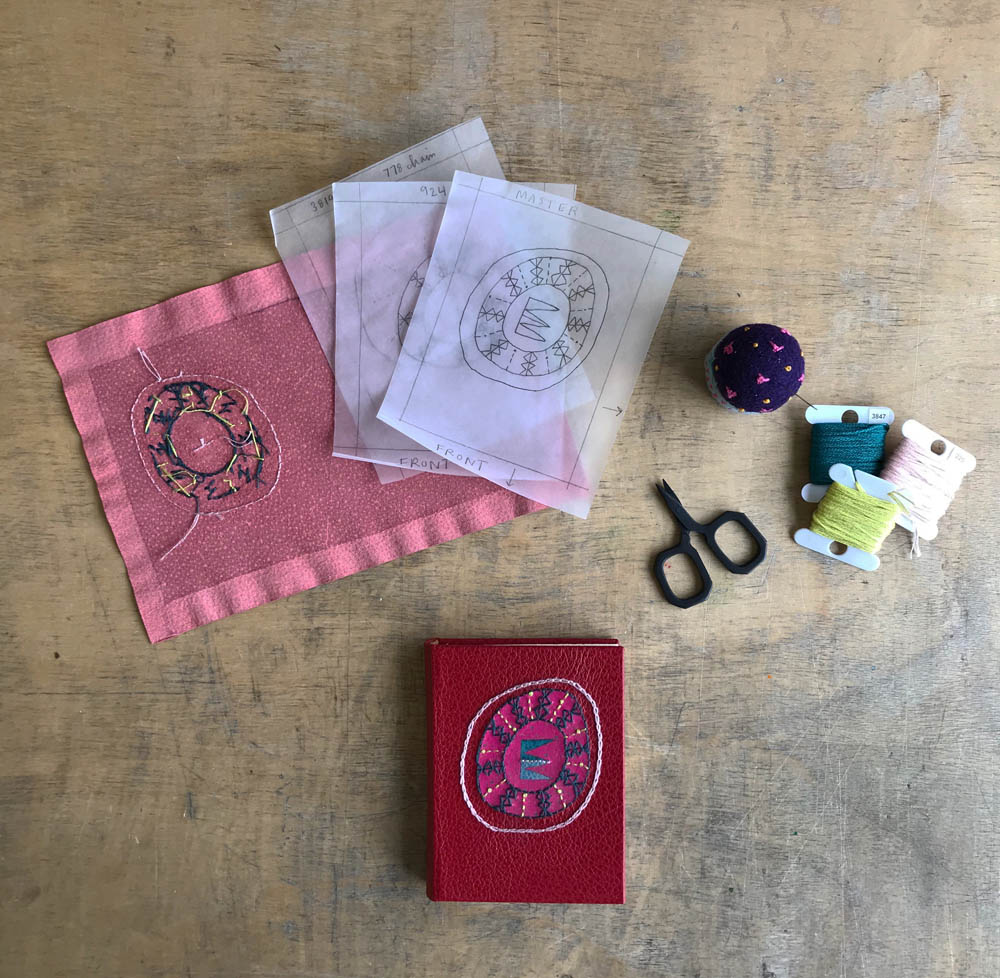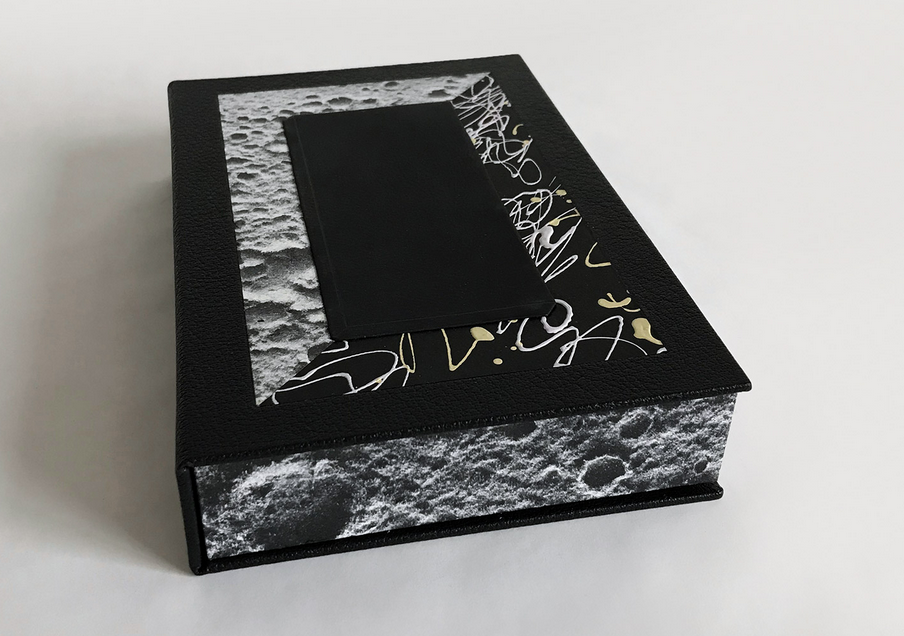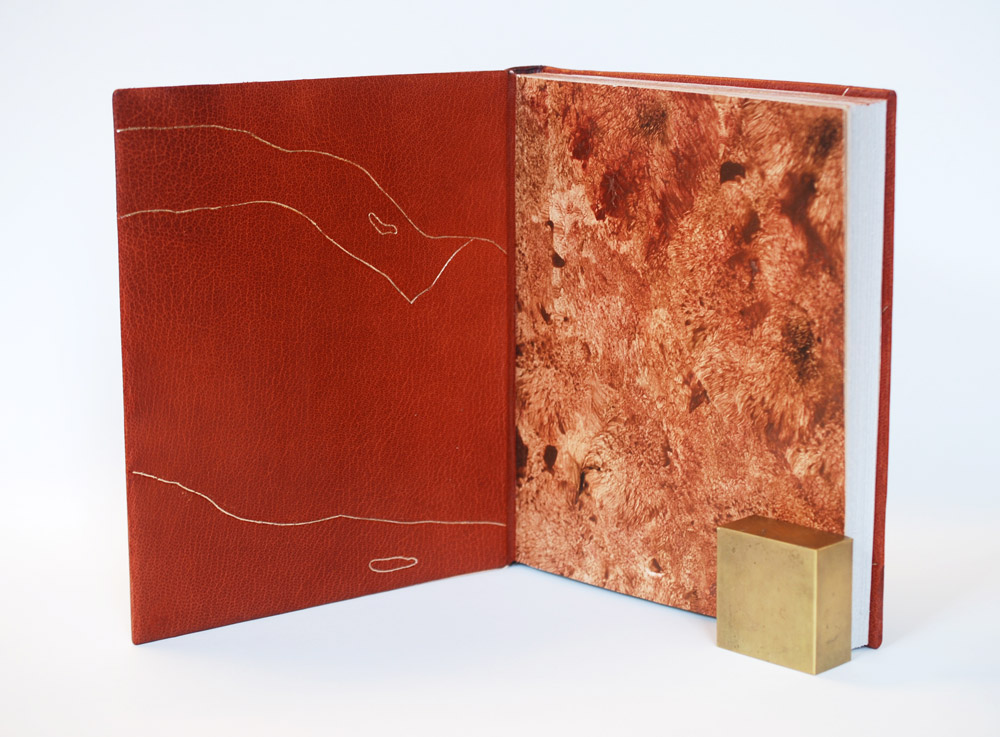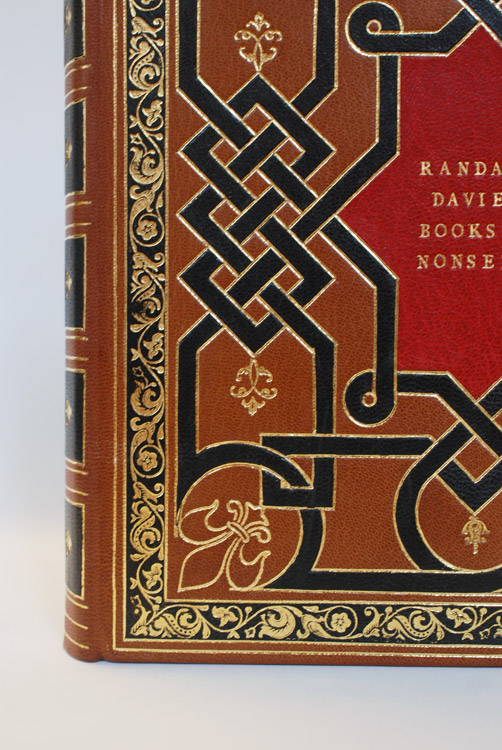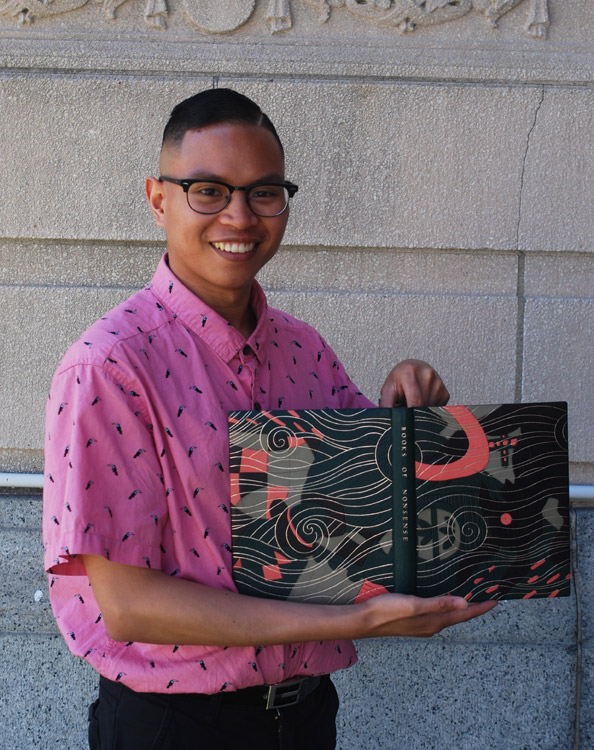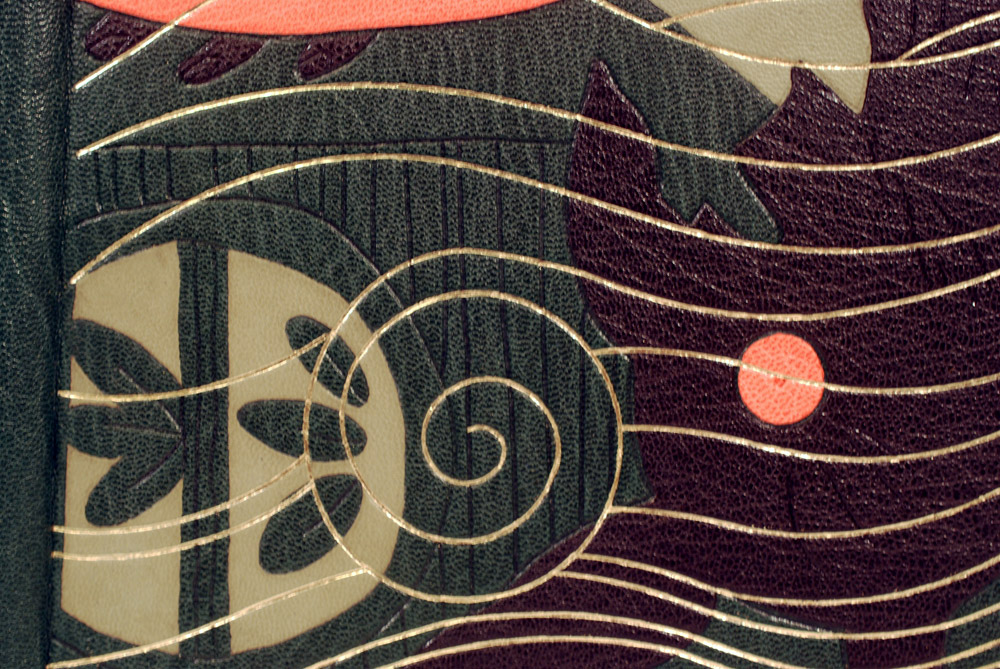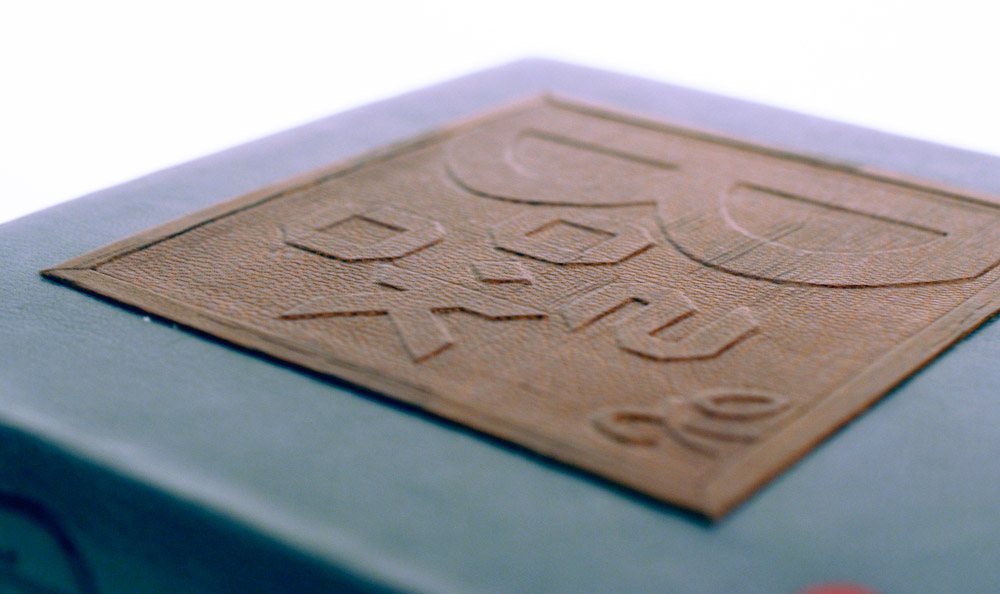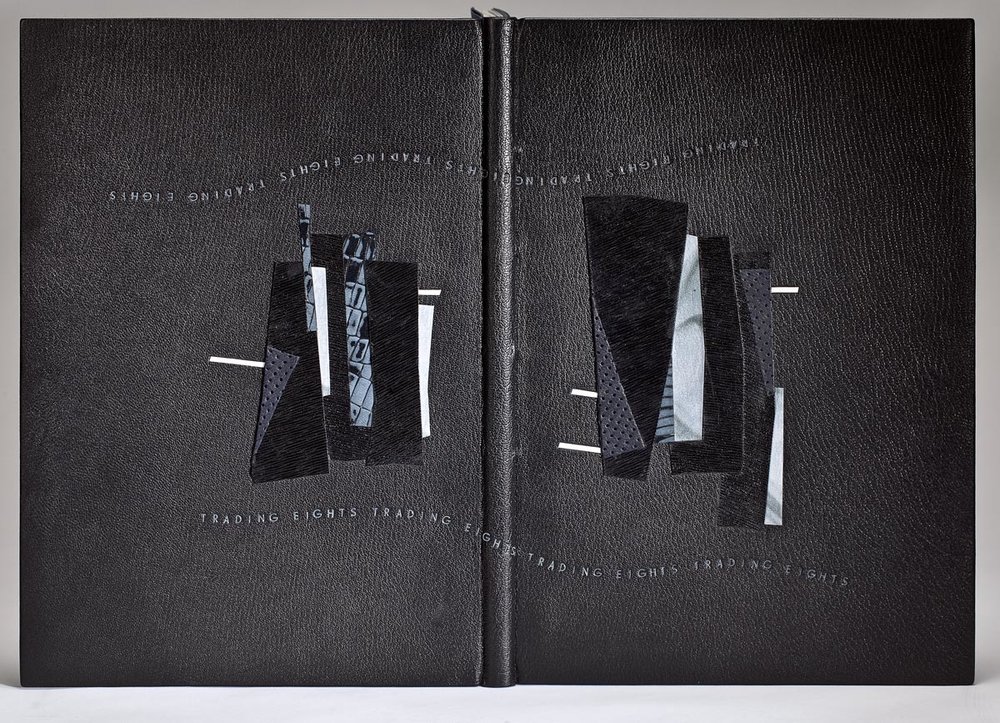
My binding of At Low Water by Rebecca Chamlee is now on view at the American Bookbinders Museum in San Francisco as part of the Guild of Book Workers Traveling Exhibit Wild/LIFE. The work in on view from June 2 – August 7, 2021.
The beach provides a microcosm that has the power to capture and reel you in for a closer look. For the design on Rebecca Chamlee’s book, I wanted to play on the transformation that occurs when removing specimens from the beach. There is a certain brilliance and beauty displayed beneath the water, yet once removed these same specimens dry out and become something entirely new.
The binding is bound in pale pink buffalo skin with back-pared onlays in printed calfskin, navy blue buffalo skin and various handmade papers. Laser-cut paper sequins tacked on with embroidery floss embellish the starfish. Additional details for the anemones and coral are hand embroidered with various colors of cotton floss. The printed onlay is outlined in a couched line of sage green cotton floss and blind tooled to create texture. Metallic pink dots are tooled around the coral.
If you are in the San Francisco area, I hope you get the chance to see this incredible exhibit of bindings, artist books and broadsides.



